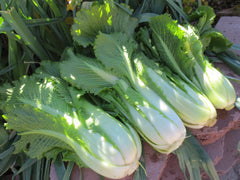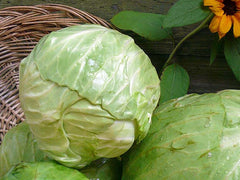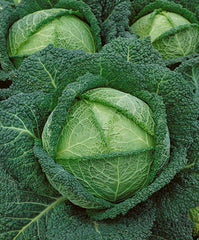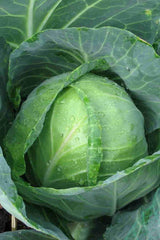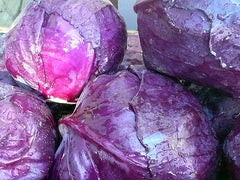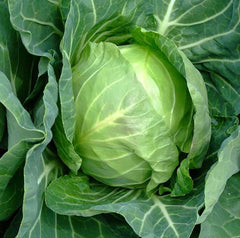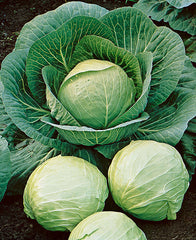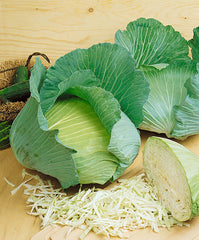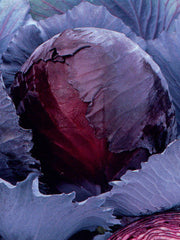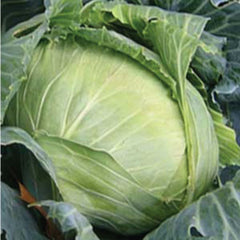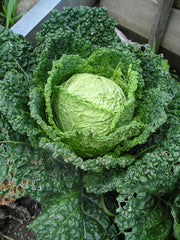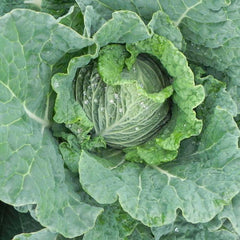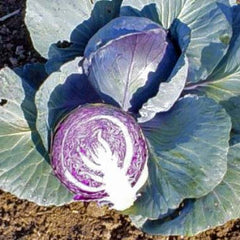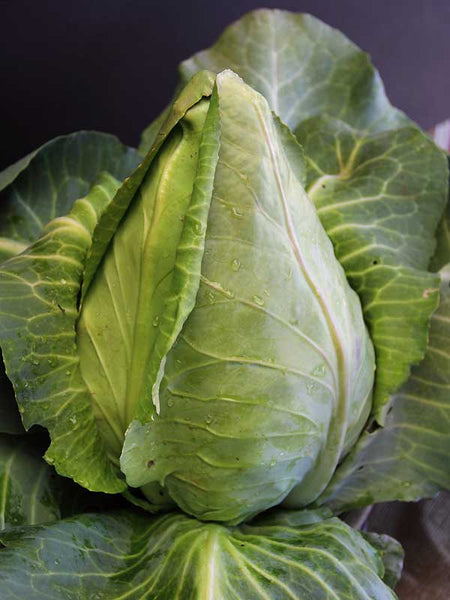Charleston Wakefield
Brassica oleracea capitata
HOW TO GROW CABBAGE
Start indoors 4-6 weeks before last frost, plant out 4 weeks before frost. For fall harvest, transplant 16 weeks before first frost for storage types, 13 weeks for fresh types, without additional protection. In a hoophouse, you can plant 2-3 weeks later. Direct sow when daytime soil temperatures warm to 75˚F. Cool weather crop, optimally brown between 60–70˚F. For mild winters where tamps are rarely below 32˚F, transplant September to February. Drought sensitive, mature heads are vulnerable to splitting under stress from rain following a dry spell, keep moisture even. Mature when the tight head leaf begins to fold back on itself. Soil pH 6–7.5. Hardiness zones 5-9. Biennial.
Days from maturity calculated from the date of seeding. Average 7,000 seeds per ounce. Average 29M seeds per acre. Federal germination standard: 75%. Usual seed life: 4 years.
Planting Depth 1/4–1/2”
Soil Temp. Germ. 50-75˚F
Days to Germ. 10-15
Plant Spacing 12–18”
Row Spacing 18–36”
Days To Maturity 70-85
Full Sun, Moist Well Drained Soil
Days from maturity calculated from the date of seeding. Average 7,000 seeds per ounce. Average 29M seeds per acre. Federal germination standard: 75%. Usual seed life: 4 years.
Planting Depth 1/4–1/2”
Soil Temp. Germ. 50-75˚F
Days to Germ. 10-15
Plant Spacing 12–18”
Row Spacing 18–36”
Days To Maturity 70-85
Full Sun, Moist Well Drained Soil
Charleston Wakefield Seed Count
1 Ounce ≈ 8,100 seeds
.25 Pound ≈ 32,400 seeds
- 100 Seeds$3.50
- 1 Ounce$15.00
- 1/4 Pound$56.00
The result of a selection from Early Jersey Wakefield made on Long Island. Sold to the F. W. Bolgiano Seed Co. in 1880. Charleston Wakefield produces a larger head than other Wakefield Cabbages, with each head weighing about 4 to 6 pounds. Charleston Wakefield has a short season at only 70 days! This cabbage stores ...
The result of a selection from Early Jersey Wakefield made on Long Island. Sold to the F. W. Bolgiano Seed Co. in 1880. Charleston Wakefield produces a larger head than other Wakefield Cabbages, with each head weighing about 4 to 6 pounds. Charleston Wakefield has a short season at only 70 days! This cabbage stores well and over-winters for those in the South. Over-winters better than Copenhagen Market. Charleston Wakefield cabbage is recommended by Alabama and Florida State Universities and Ag Extension Offices as a variety that performs well for their region. Tags: Color: Green, Shape: Elongated, Heritage: New Listing, Season: Spring Fall, Seed: Safe Seed Pledge.
Learn More
Reviews
